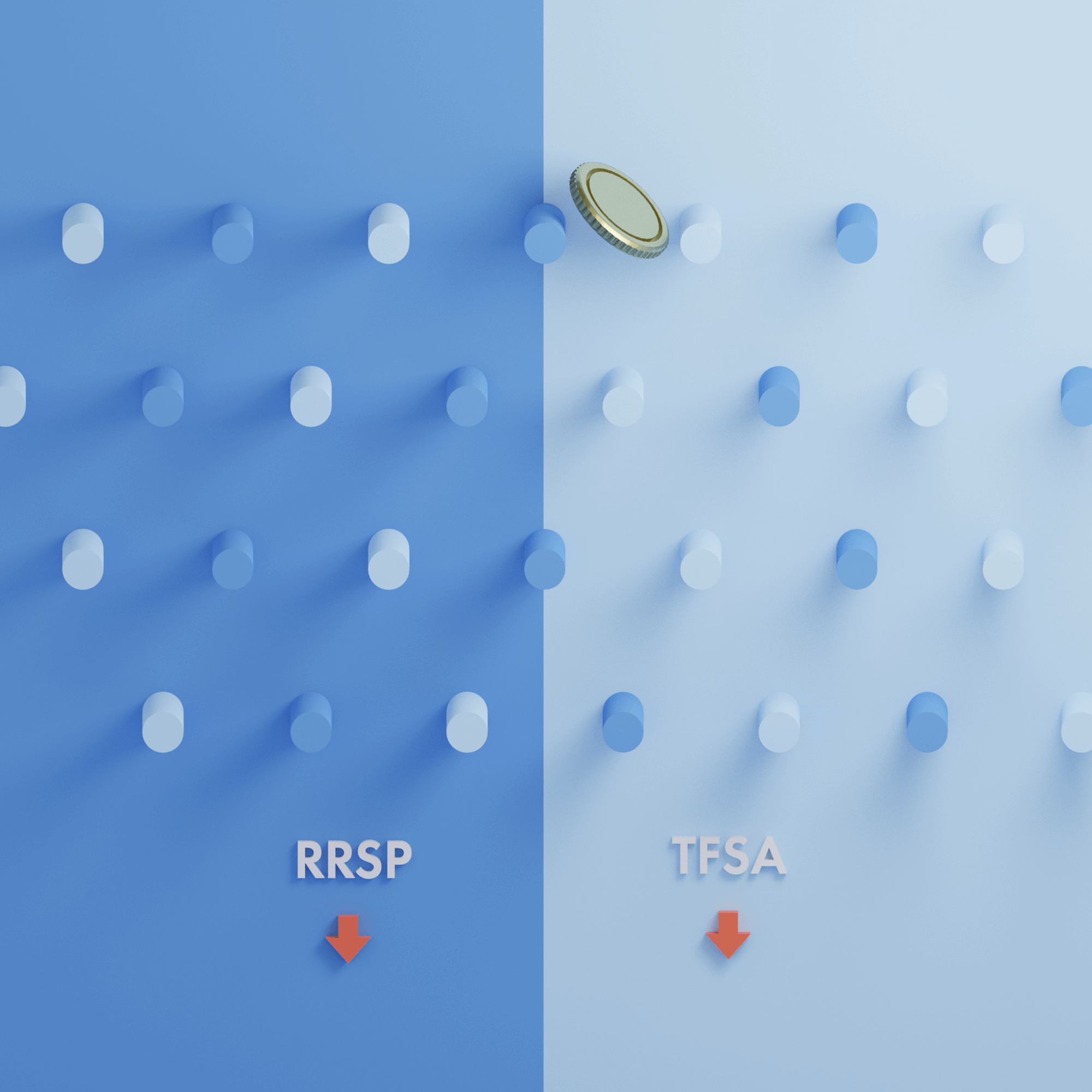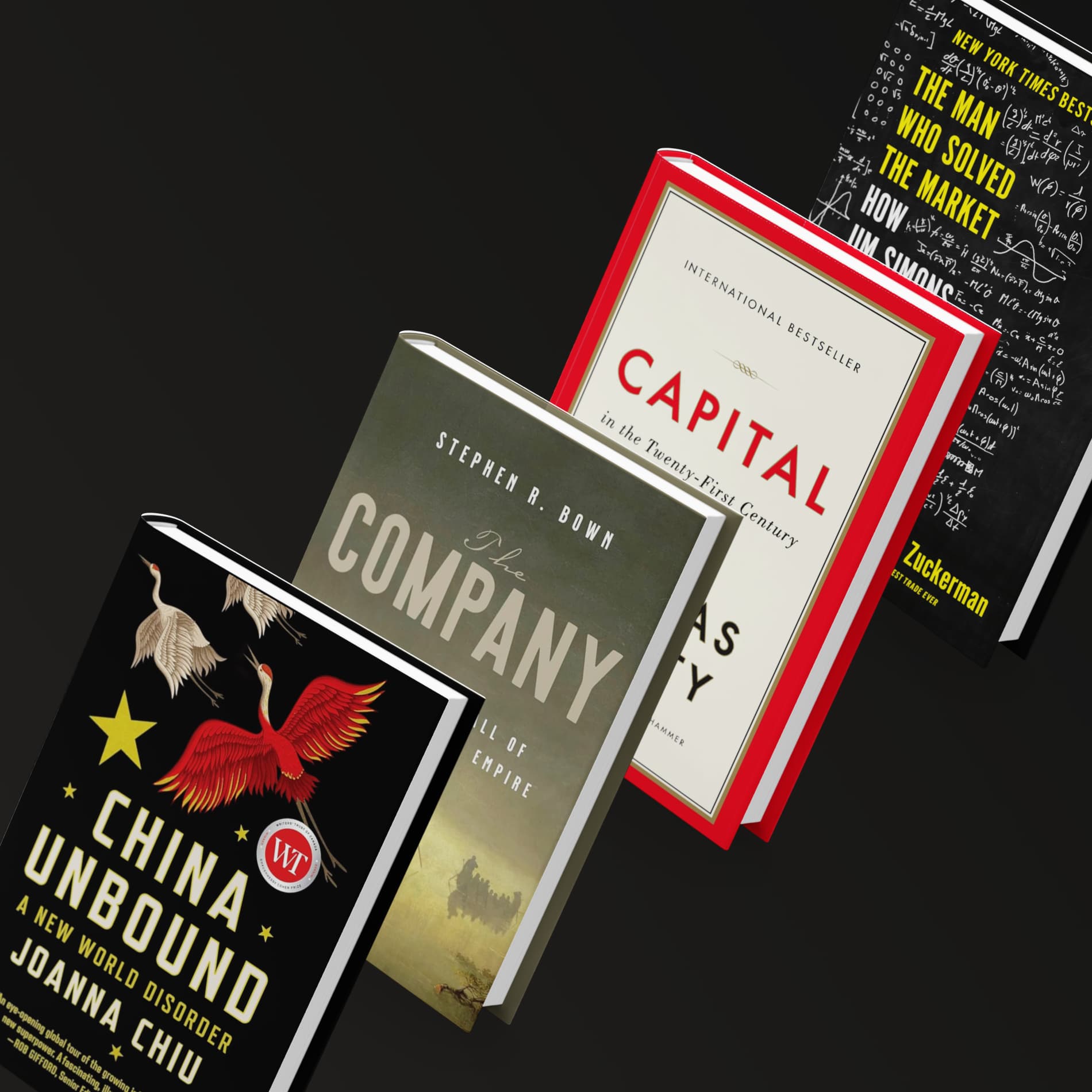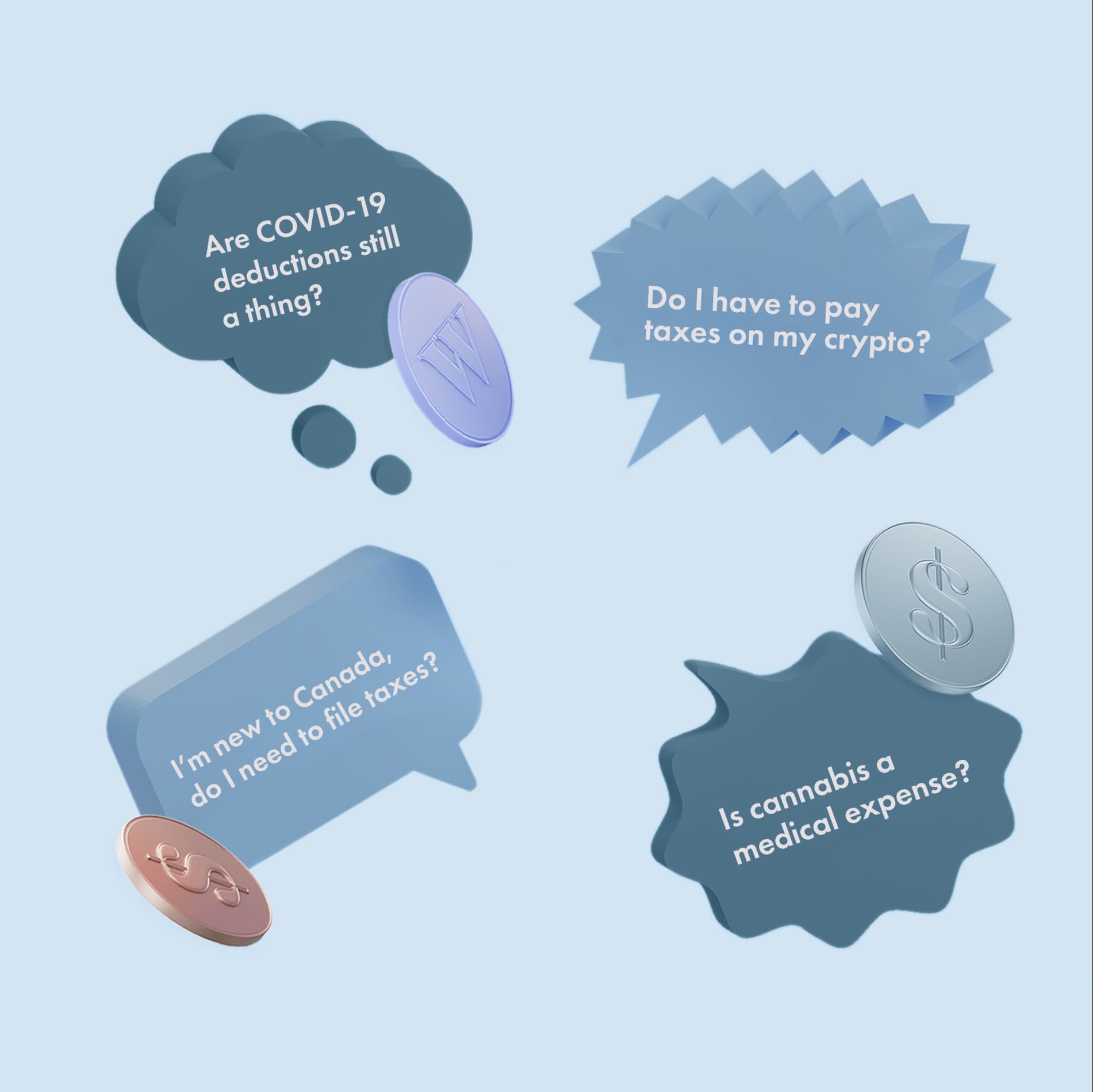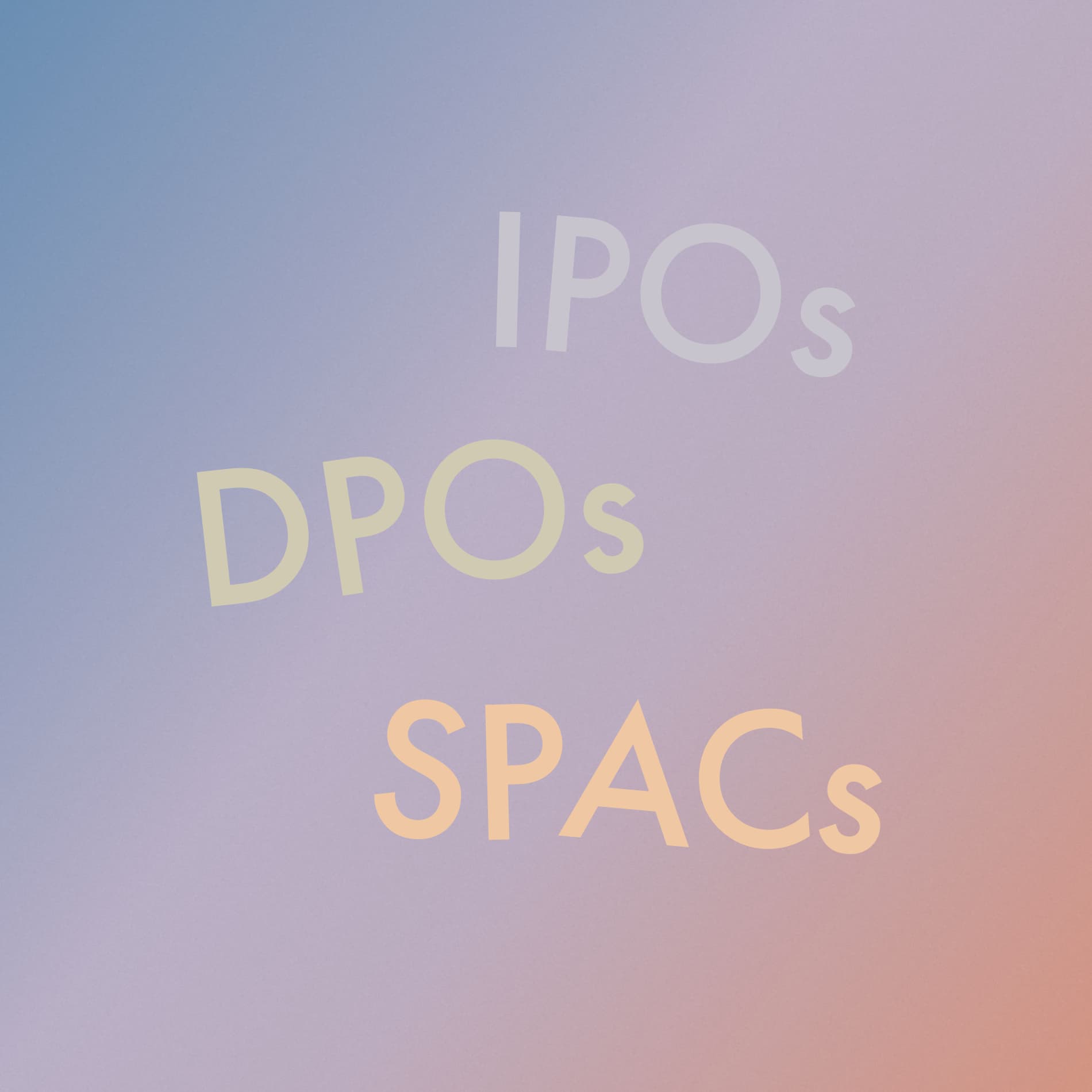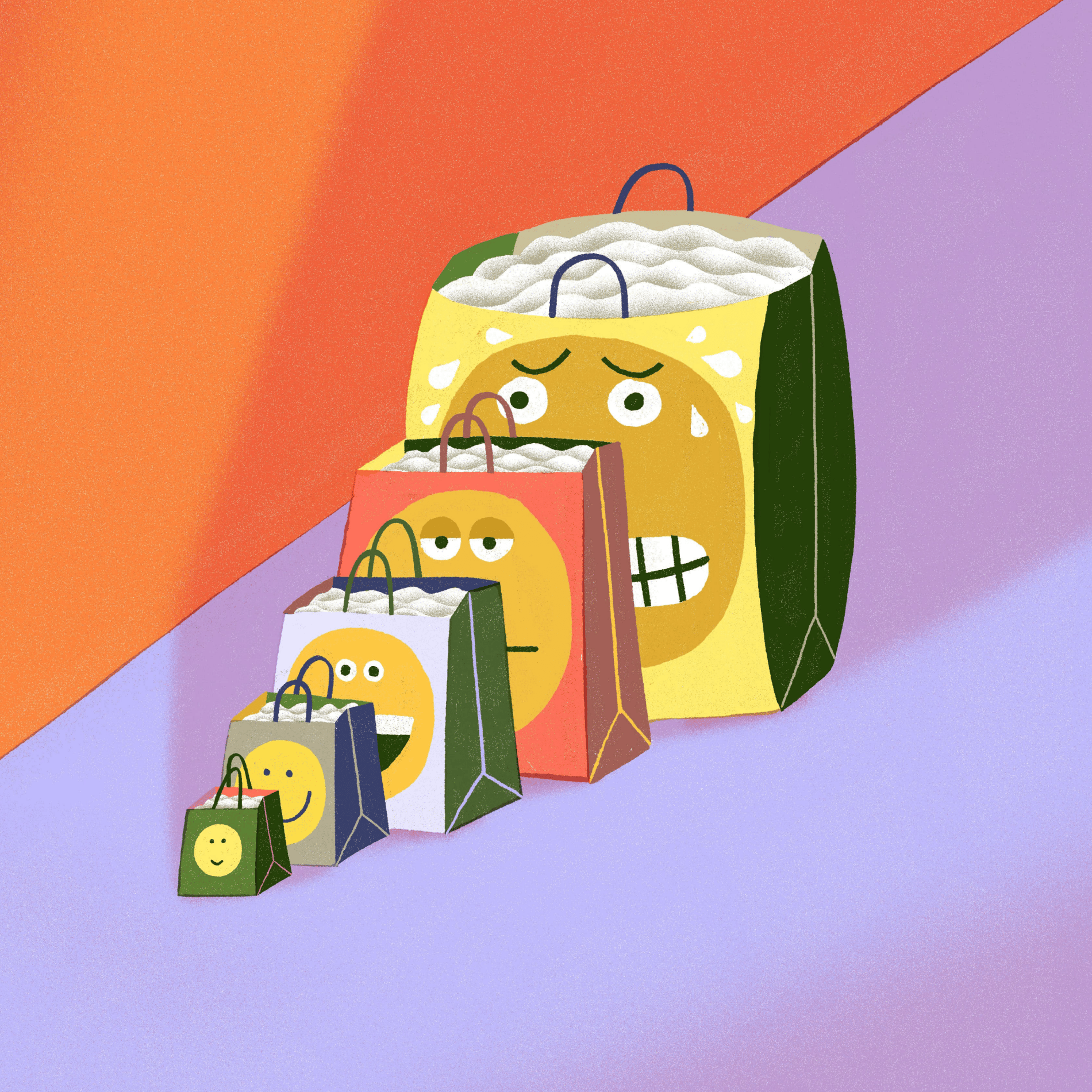Finance for Humans
Learn to Speak Crypto: Lesson One
In our first installment, we’ll learn five terms that’ll help you understand not just the weird words the crypto-literate are using, but also crypto itself.
Wealthsimple makes powerful financial tools to help you grow and manage your money. Learn more
Welcome to our guide to the 50 words you need to understand if you want to understand crypto. Let’s get cracking.
FORK
What It Means: One of the cool things about a blockchain is that you (and by “you” we mean basically “anyone”) can change it. And then the world can accept it, and suddenly it’s a whole new thing. (Or they can… not). A fork is one of these open-source edits, or changes, to a blockchain code. It creates a divergent path in the code — a fork in the road — and sometimes entirely new blockchains or blockchain applications.
Why It Matters: There are two kinds of forks — hard forks and soft forks. Hard forks are when an update is made to the blockchain but not all miners/validators agree on it, so the blockchain splits into two and both continue to exist in parallel. Soft forks happen when an update is made and most miners/validators agree, then people migrate to the new version and the previous version is mostly abandoned.
As you might imagine, forks make blockchains incredibly robust and adaptable. They’re also disruptive and a reliable source of infighting among a very democratic (and vocal) blockchain community. Rifts can form, as a huge one did in 2017, when a group of developers and investors split from Bitcoin to form Bitcoin Cash over a disagreement about scalability. If such forks occur on the reg, investors could lose faith in a cryptocurrency, leading to a value drop.
A Little More Context: Forgetting China and Elon Musk for a moment, one of Bitcoin’s top problems is scalability. Visa processes something in the ballpark of 1,700 transactions per second. Bitcoin can process roughly seven. Seven! The currency’s truly dismal processing power will, at some point, require an ultra-hard fork to fix — which will inevitably cause tons of squabbling before everything is said and done.
How To Use It in a Sentence: The transactions had gone without a hitch until someone discovered a small bug. But someone forked it, and now it’s all set.
CRYPTOKITTIES
What It Means: You’ve heard of NFTs by this point, right? CryptoKitties were the OG NFTs, traded in a blockchain game launched in 2017 on the Ethereum network. Think of them as the crypto equivalent of Beanie Babies.
Why It Matters: Seriously, before there was TopShot, or Grimes, or Beeple, or William Shatner selling his dental records as art, there were CryptoKitties. You can collect, and even breed, these little virtual pets, but, more importantly, you can buy and sell them like assets. Because that’s what they are. The CryptoKitties pioneered the NFT space, proving that digital assets can have value. In 2018, one CryptoKitty alone sold for $140,000.
A Little More Context: “They’re now a piece of crypto history,” says Danish Ajmeri, Wealthsimple’s Head of Crypto. “Which, of course, just makes them more valuable and more collectible.” In this way, CryptoKitties are even more like Beanie Babies, though, all told, they’re a lot cuter.
How To Use It in a Sentence: I wanted to buy a Gen 8 SantaClaws CryptoKitty, but the cheapest one was listed for 15 ETH, so I had to pass.
DOGECOIN
What It Means: Dogecoin (pronounced like dojo but without the last o) is the OG meme coin, a currency based entirely on an internet joke.
Why It Matters: If you’re saying to yourself, Wait, so this is the cryptocurrency based on a dog meme? The answer is yes, yes it is. What happened was that, in 2013, two software engineers, one from Adobe, one from IBM, decided to satirize cryptocurrencies — which were seen as fairly scammy at the time yet were the subject of wild speculation — by making their own. And, to drive home just how stupid these engineers considered cryptocurrencies, they used a meme of a Shiba Inu dog, typically depicted speaking in confused, garbled English, as the currency’s logo.
But then the joke Pinocchio-ed into a real, live boy when traders started buying it up. In doing so, these traders effectively proved how crazily fungible cryptocurrency really was. Because —and this is the real kicker — unlike Bitcoin, Dogecoin has no supply limit, so its long-term value was, and remains, probably not terrific. And yet, perhaps ironically, buyers kept buying it and pumping up the currency’s value.
Recommended for you
Dogecoin, in the end, illustrates an important financial maxim: value doesn’t know it’s ironic, value doesn’t know anything, it’s just value. The currency’s rise has led Elon Musk to suggest — maybe jokingly, maybe not — that Dogecoin could be the future of cryptocurrencies.
A Little More Context: You can buy and sell Dogecoin at just about every cryptocurrency marketplace, and it certainly isn’t difficult to find: since Dogecoin lacks a supply cap, there are more than 129 billion DOGE available, with 10,000 new coins mined every minute. The currency, for all its hype, is currently only worth about 35 cents a coin. But its value has continued to climb (albeit with some big, brief dips recently), mostly owing to the fact that it’s a funny thing to buy and an easy point-of-entry for investors entering the cryptocurrency game. The catch, of course, is that if Dogecoin one day ceases to be so funny, it could shed serious value in a hurry.
How To Use It in a Sentence: Jeff bought some Dogecoin for kicks because Elon Musk said that it would be funny but also that Doge is probably the future.
21 MILLION
What It Means: 21 million is the specific, and specifically limited, number of Bitcoins that can exist in the universe. There can never be any more created once they’re all mined.
Why It Matters: With the exception of Ethereum, the most successful cryptocurrencies share a common characteristic: a fixed supply. A finite amount of coin is what distinguishes cryptocurrencies from normal money. You can’t just make more of it, and inflate the currency, whenever you want. When Satoshi Nakamoto invented Bitcoin, he capped the total at 21 million. Why that number? “I wanted to pick something that would make prices similar to existing currencies, but without knowing the future, that’s very hard,” Nakamoto said in an email. If he picked a substantially larger number, he feared that Bitcoin would be worth less per unit than existing currencies, dooming it for irrelevance. But if there were a mere 21 million coins in use worldwide, “it would be worth much more per unit,” he explained. The last Bitcoin is expected to be mined in 2140. No one really knows what will happen with the currency after that.
A Little More Context: The original idea was for Bitcoin to be worth about 1/1000th of a Euro — though, at last check, it sits about 11 times that. But what’s important is that Bitcoin is finite. “It’s somewhat akin to gold,” Ajmeri says. “There is only so much gold in the world, which is precisely why it’s valuable.” You can’t make more of it, and any sliver is worth something.
How To Use It in a Sentence: It might not seem like 0.00113 Bitcoin is very much, but when you realize there are only 21 million coins in the world, it suddenly feels a lot larger, doesn’t it?
VITALIK BUTERIN
What It Means: Vitalik Buterin is a 27-year-old Russian programmer who co-founded Ethereum, an open-source blockchain and cryptocurrency.
Why It Matters: “He’s probably the current face of crypto,” Ajmeri says of Buterin. “He’s the savant of the space.” Those are big words, especially for a 27-year-old, but Buterin lives up to the hype. He founded Bitcoin Magazine at the age of 17, then coded his own cryptocurrency, Ethereum, which he launched in 2014. Now the second-largest cryptocurrency behind Bitcoin, Ethereum runs on what are known as “smart contracts,” or deals with transparent, unchangeable terms that allow blockchain transactions to be public and more secure.
A Little More Context: With Ethereum’s ascendance, Buterin has amassed a personal fortune that hovers around a billion dollars and has gained enough clout for his public proclamations to move markets. He’s now wielding his influence to tackle some of crypto’s largest problems, such as its environmental effects and scalability.
How To Use It in a Sentence: Did you see Vitalik Buterin clap back at Elon Musk on Twitter? You can’t “just increase the block size by 10x,” he said.
